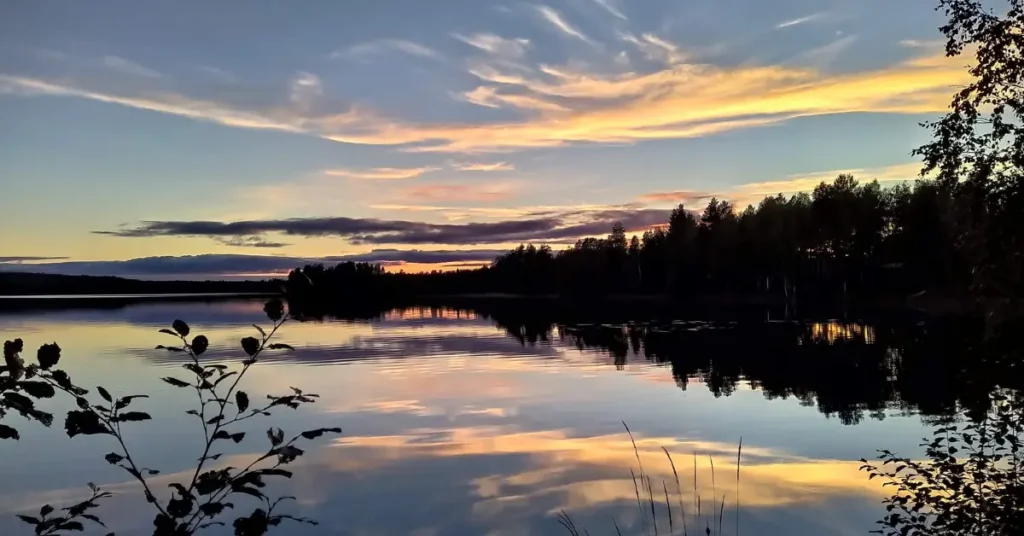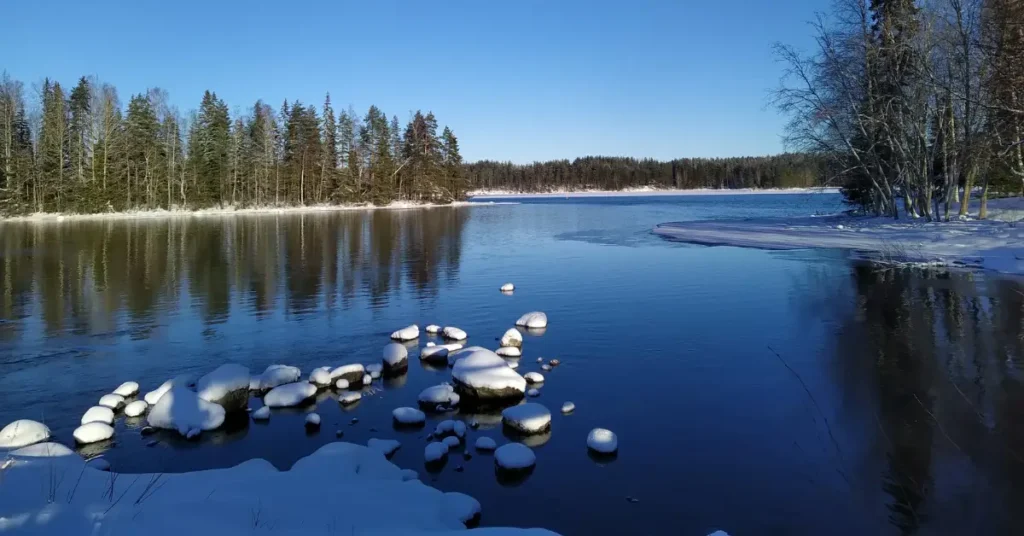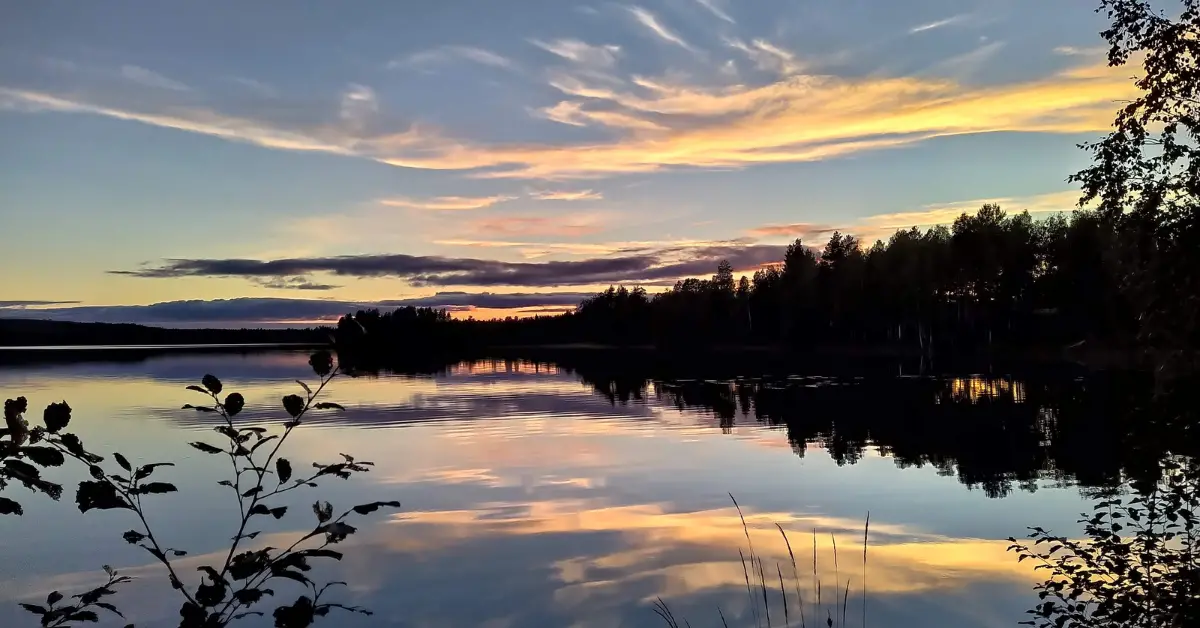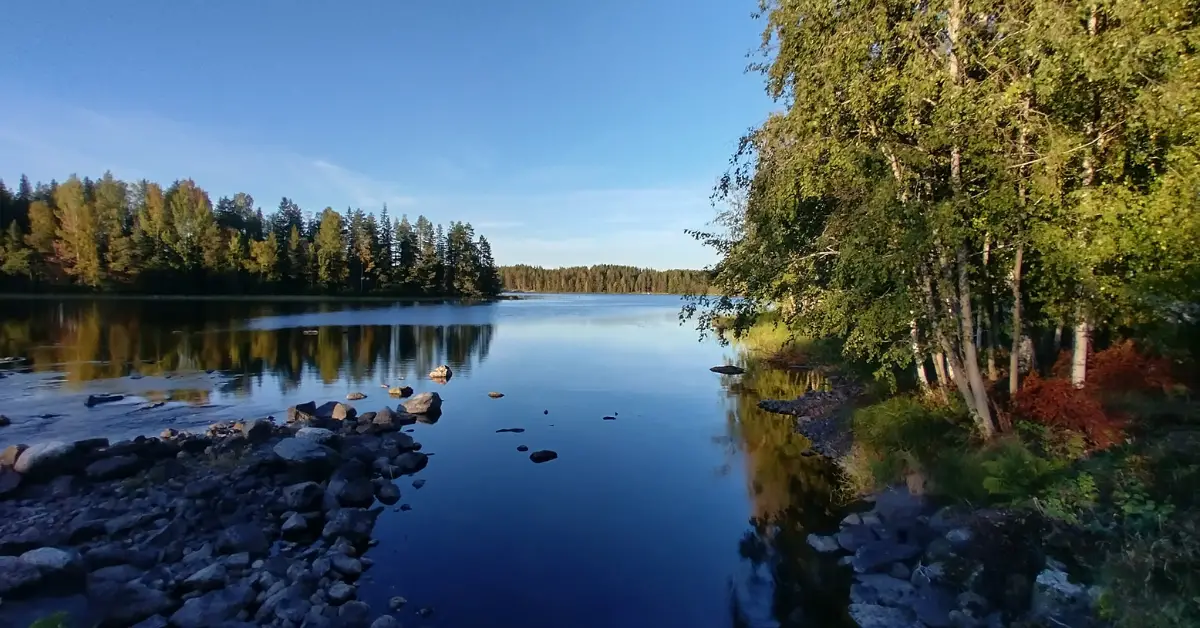Experience one of Europe's most spectacular natural phenomena as millions of birds surge northward to their Arctic breeding grounds
The Great Arktika Migration
Spring in Finland is nothing short of miraculous.
As the ice breaks and snow melts, the country transforms into one of Europe’s most important migration corridors, hosting what Finnish birders call “Arktika” – the great northward surge of millions of waterbirds, raptors, and songbirds racing toward their Arctic breeding grounds.

This concentrated, explosive movement creates birding spectacles that rank among the finest wildlife experiences anywhere on the continent.
Unlike autumn’s gradual, protracted passage, spring migration is urgent and compressed.
Birds push northward as rapidly as advancing weather permits, creating concentrated movements where a single morning can yield observations of tens of thousands of individuals representing dozens of species.
The energy is palpable – every day brings new arrivals, every weather system triggers major movements, and the northern landscape transforms from winter silence to a symphony of territorial calls and courtship displays.
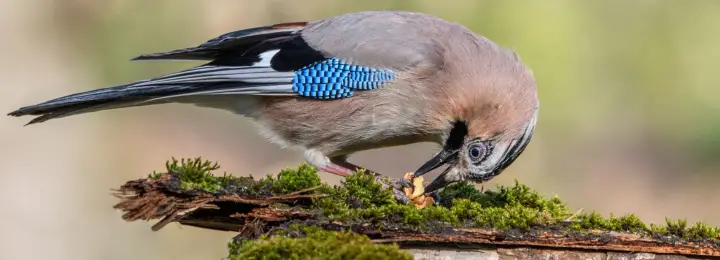
Spring in Finland offers two distinct but equally remarkable experiences: the coastal migration spectacle, where massive flocks stream northward along shorelines and through traditional bottlenecks, and the forest awakening, where displaying grouse, returning forest birds, and territorial owls create intimate encounters in the greening taiga.
From the famous goose flocks of Virolahti to the spectacular lekking displays of Capercaillie and Black Grouse, spring birding in Finland delivers experiences that define a lifetime of birding memories.
The season demands flexibility and weather awareness but rewards those qualities with opportunities that exist nowhere else in Europe.
This is when Finland’s position as the gateway to the Arctic becomes most apparent – you’re witnessing birds that will soon be breeding on the Russian tundra, whose journeys span continents and whose navigational abilities remain one of nature’s great mysteries.
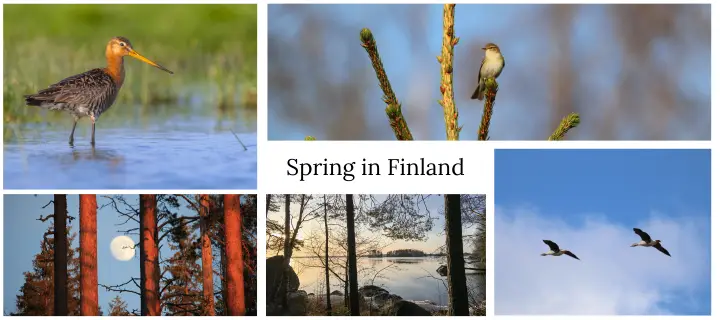
What Makes Spring Migration Extraordinary in Finland?
The Arktika Phenomenon
The term “Arktika” captures the essence of spring in Finland – a massive, concentrated pulse of migration that transforms the landscape:
- Millions of Individuals: Millions of waterbirds and hundreds of thousands of geese migrate via the Gulf of Finland to their nesting places on the Arctic tundra
- Compressed Timing: The entire spectacle concentrates into just 4-6 weeks
- Visible Movement: Unlike many migration events, spring passage is highly visible and diurnal
- Multiple Flyways Converge: Different migration routes concentrate along Finland’s coastlines
- International Significance: Finland is of special importance as an international migration pathway, with vast numbers of birds breeding in Northern Russia migrating through Finland
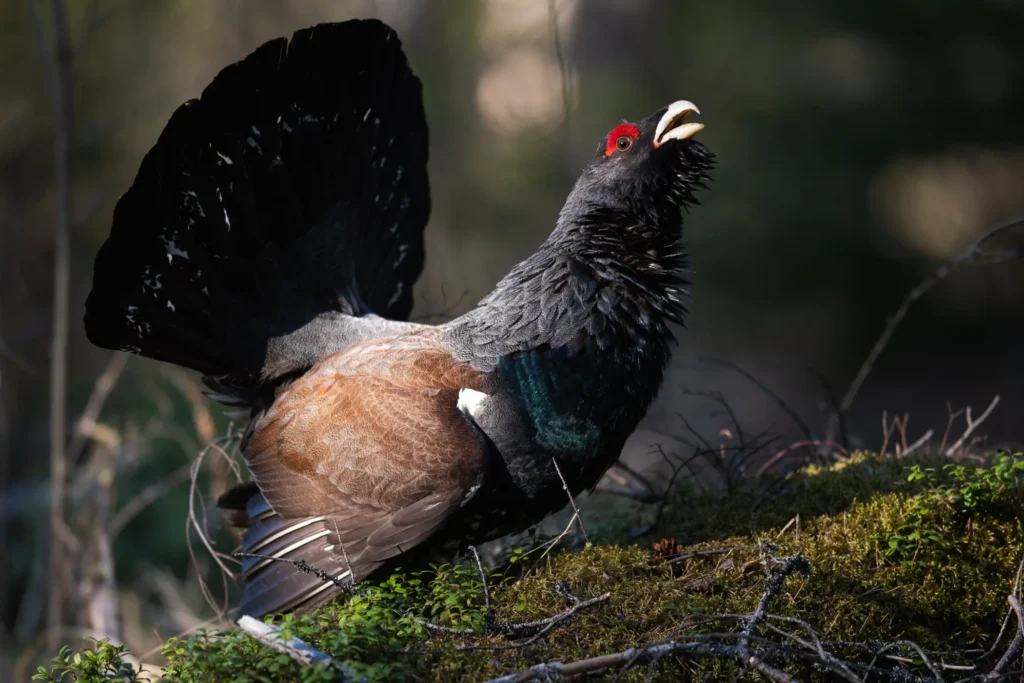
Grouse Lekking Spectacle
Spring coincides with one of nature’s most remarkable displays – the lekking of forest grouse:
- Capercaillie Displays: The best season to see and photograph the lekking Capercaillie and Black Grouse is between end of April to middle of May
- Black Grouse Performances: More accessible and easier to observe than their larger cousins
- Traditional Lek Sites: Same locations used generation after generation
- Dawn Spectacles: Displays begin before sunrise, creating magical encounters
- Photography Opportunities: Hide-based observation allows for intimate documentation
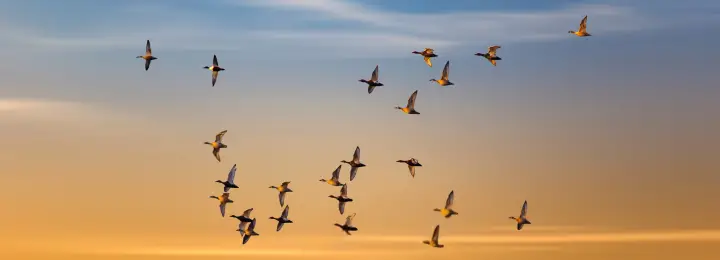
Daylight Returns
After winter’s darkness, spring brings rapidly extending daylight:
- Accelerating Dawn Chorus: Increasing day length triggers intense territorial singing
- Extended Observation Hours: More daylight means more birding time
- Energy and Activity: Birds maximize daylight for feeding and territory establishment
- Photography Windows: Longer days provide multiple golden hour opportunities
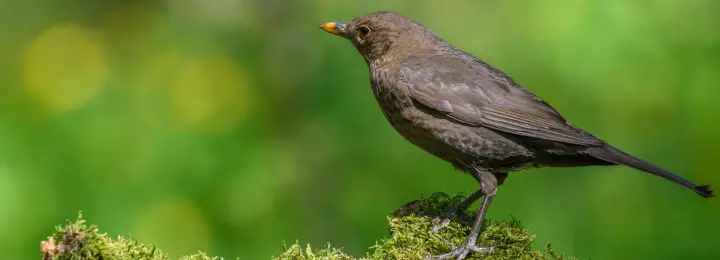
Species Diversity Explosion
Spring brings maximum species diversity to Finland:
- Winter Residents Still Present: Northern specialties haven’t yet departed
- Massive Migration Passage: Peak numbers of migrants moving through
- Summer Residents Arriving: Breeding species establishing territories
- Overlap Opportunities: Chance to see species that never co-occur at other seasons
A Short Film from Finland
The Spring Migration Calendar: Timing is Critical
Early April: The Ice Breaks
Early April marks the tentative beginning of spring migration as the first returning species test the advancing season.
Ice-Out Arrivals:
- Whooper Swan: Among the earliest returnees, appearing as soon as water opens
- Bean Goose: Both Taiga and Tundra subspecies begin northward movement
- White-tailed Eagle: Increased activity as residents prepare for breeding
- Skylark: First songbirds herald the approaching season
- Lapwing: Distinctive peewits announce spring’s arrival
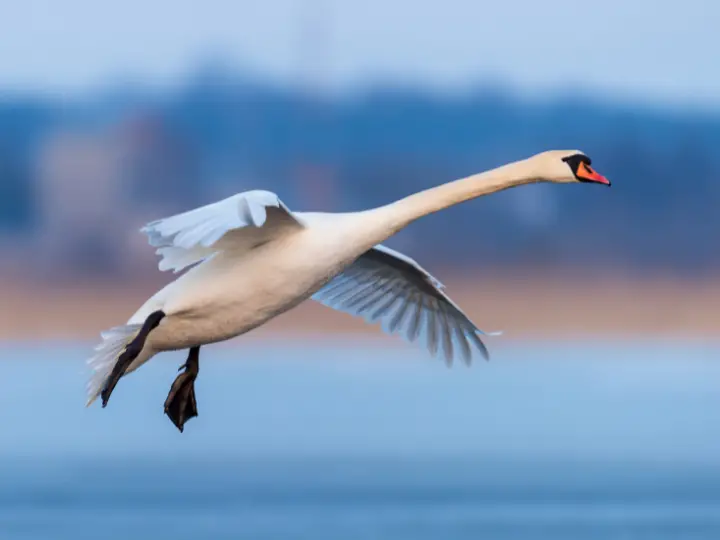
Transitional Conditions:
- Variable Weather: Winter can return temporarily, stalling migration
- Ice Conditions: Open water availability determines waterfowl distribution
- Snow Cover: Northern areas still deeply snow-covered
- Temperature Dependent: Cold snaps can reverse migration progress

Strategic Approach:
- Focus on southern coastal areas where ice breaks first
- Monitor weather forecasts for migration-triggering conditions
- Be prepared for winter-like conditions despite calendar date
- Target early arriving species rather than mass migration events
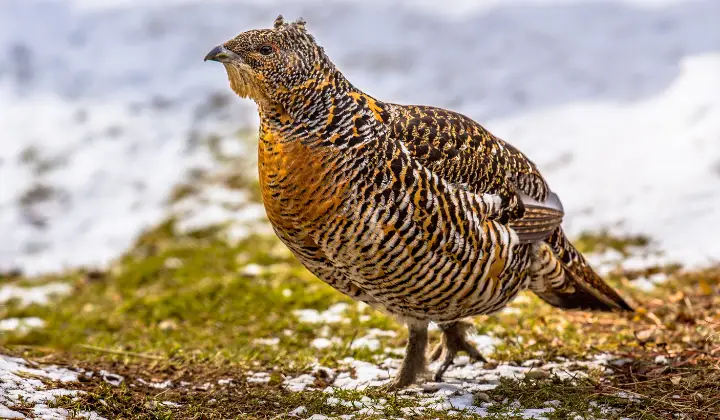
Mid-Late April: Building Momentum
Late April sees migration intensity increase dramatically as more species join the northward push.
Grouse Lekking Begins:
- Capercaillie Leks: The Capercaillie lek lasts for about a month from 20 April to 20 May depending on the progress of the spring
- Black Grouse Leks: Spring season for Black Grouse is 20 March to 20 May, with peak activity in late April
- Traditional Sites: Lek locations established, making finding easier
- Weather Dependent: Cold temperatures can affect display intensity

Migration Accelerates:
- Crane Passage: Common Cranes begin major northward movement
- Waterfowl Diversity: Multiple duck species moving through daily
- Raptor Migration: First significant numbers of migrating birds of prey
- Songbird Arrival: Wagtails, pipits, and early warblers appear
- Gull Concentrations: Various species gather at traditional sites
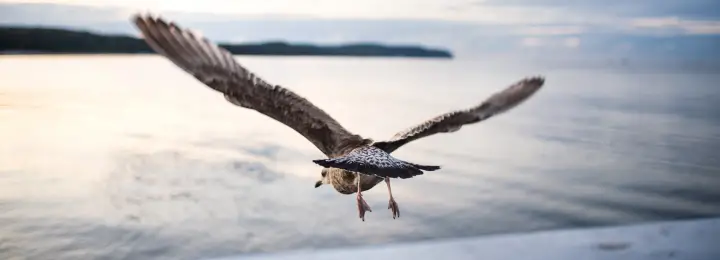
Regional Considerations:
- Southern Coast: Major migration already underway
- Central Finland: Migration just beginning in earnest
- Lapland: Still locked in winter, awaiting May thaw
- Eastern Forests: Focus on resident species and grouse displays
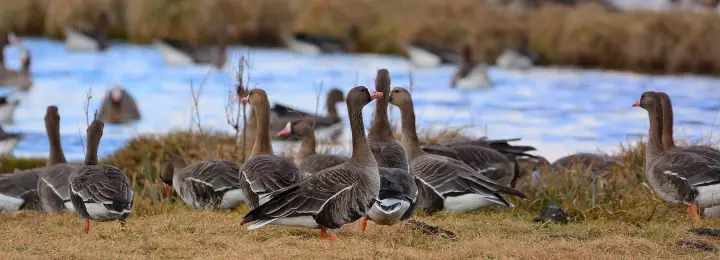
Early May: The Arktika Crescendo
Early May brings the beginning of the Arktika's most spectacular phase.
Goose Migration Intensifies:
- Barnacle Goose: Numbers build toward mid-May climax
- Brant Goose: Smaller, darker Arctic breeders join the northward stream
- Bean Goose: Peak passage of both subspecies
- Greater White-fronted Goose: Significant numbers through coastal sites
- Lesser White-fronted Goose: Rare but possible among other goose flocks

Wader Arrival:
- Broad-billed Sandpiper: Heading to northern breeding grounds
- Temminck’s Stint: Small numbers passing through wetlands
- Ruff: Males in spectacular breeding plumage at traditional leks
- Black-tailed Godwit: Beautiful rusty-red breeding dress developing
- Spotted Redshank: Transformation to dark breeding plumage underway

Forest Awakening:
- Summer Warbler Arrival: Multiple species establishing territories
- Thrush Diversity: Song Thrush, Redwing, and Fieldfare all present
- Flycatcher Arrival: Pied and Spotted Flycatchers claiming nest sites
- Cuckoo Calls: Distinctive calls echo through awakening forests
Mid-May: Peak Migration Spectacle
Mid-May represents the absolute peak of Finland's spring migration – the Arktika at its most spectacular.
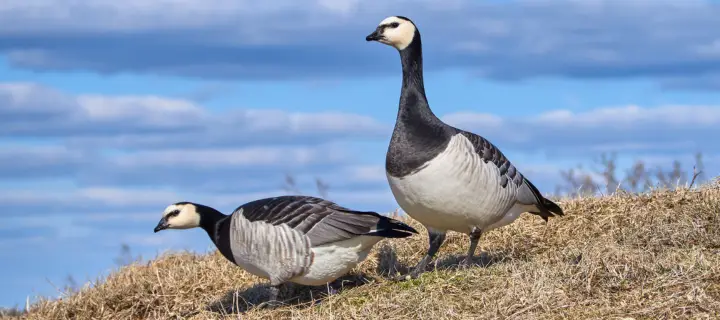
The Great Goose Passage:
- Mass migration of Barnacle Geese and Brant Geese during the second half of May
- Sky-Filling Flocks: Literally thousands of geese visible simultaneously
- Constant Movement: New flocks arriving continuously throughout the day
- Vocal Cacophony: Calls of thousands of geese create unforgettable soundscape
- Traditional Sites: Virolahti and other coastal locations at peak activity
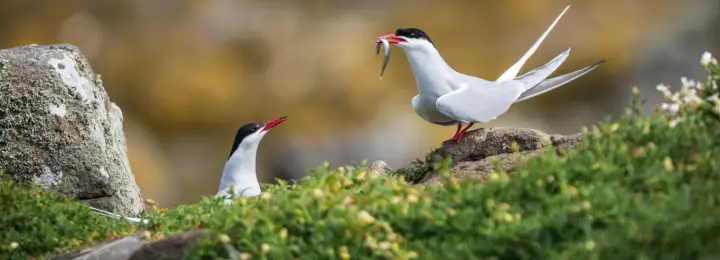
Tern and Gull Spectacle:
- Arctic Tern: Graceful sea swallows arriving in numbers
- Common Tern: Establishing breeding colonies
- Black-headed Gull: Peak numbers at coastal sites
- Lesser Black-backed Gull: Returning from southern wintering areas
- Various Other Species: Multiple gull species creating identification challenges
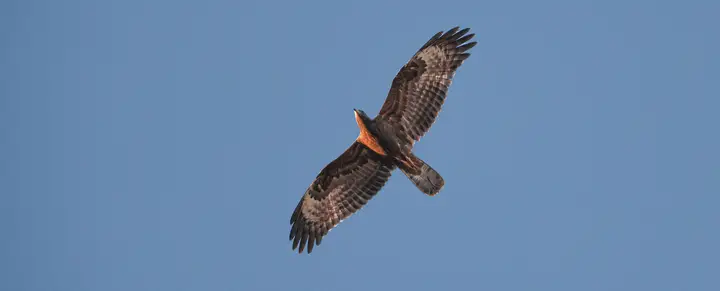
Raptor Migration:
- Honey Buzzard: Main spring passage underway
- Common Buzzard: Significant numbers heading north
- Marsh Harrier: Returning to breeding wetlands
- Osprey: Fish-eating specialists back at traditional nest sites
- Hobby: Fast-flying falcon specialists arriving
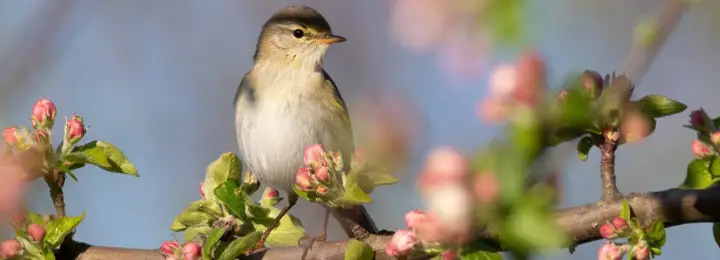
Songbird Diversity Peak:
- Multiple Warbler Species: Garden, Willow, Wood, and many others
- Chat Family: Whinchat and Redstart in fresh plumage
- Reed Bed Specialists: Reed and Sedge Warblers establishing territories
- Late Arrivals: Species like Icterine Warbler and Thrush Nightingale appear
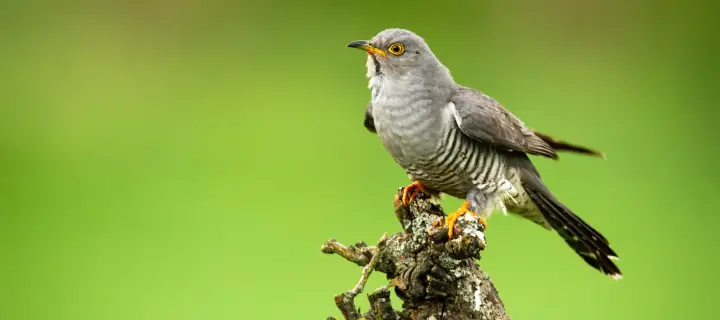
Late May: Transition to Breeding Season
Late May sees migration winding down as the focus shifts to breeding activities.
Final Migration Push:
- Late Arctic Species: Last birds heading to northernmost breeding areas
- Overshoot Possibilities: Weather-related vagrant potential increases
- Post-Migration Rest: Many species pausing before final breeding ground arrival
- Territory Establishment: Residents fully engaged in breeding behaviors
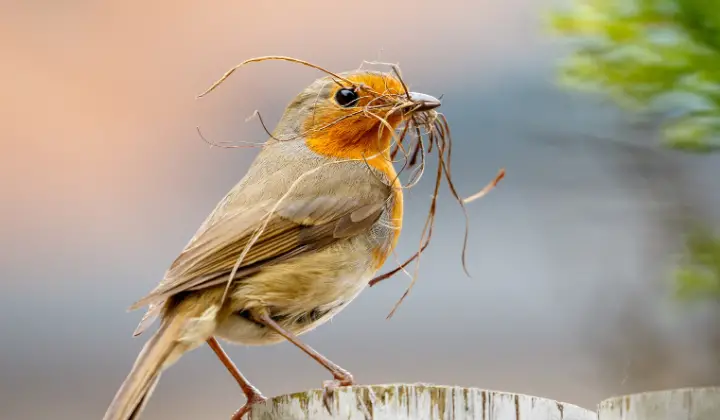
Breeding Season Begins:
- Nest Building: Active construction at many species’ territories
- Territorial Singing: Dawn chorus at peak intensity
- Courtship Feeding: Pair bonding behaviors visible
- Early Nesters: Some species already incubating eggs
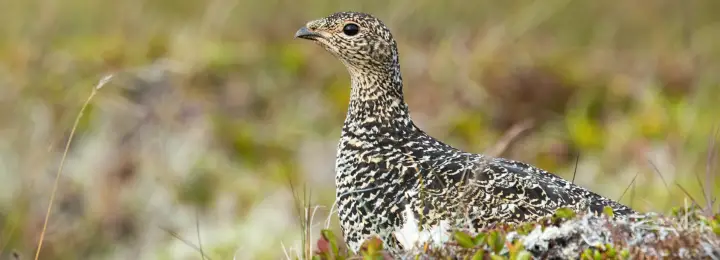
Northern Awakening:
- Lapland Spring: Northern regions finally experiencing spring arrival
- Alpine Species: Dotterel and Ptarmigan in breeding areas
- Last Ice-Out: Final wetlands becoming available for waterbirds
- Compressed Spring: Northern regions experience accelerated seasonal progression

Prime Spring Migration Hotspots
Virolahti - The Arktika Capital
Location: Southeastern Finland, on the Gulf of Finland coast
Why It’s Legendary: The beautiful town of Virolahti located on the coast of Southeastern Finland is the best place for a nature enthusiast to watch this amazing mass migration in the whole Europe
The Virolahti Phenomenon: Virolahti’s position at the northeastern corner of the Gulf of Finland makes it the natural focal point for birds following the coastline northward. The most spectacular moments take place in May when millions of waterbirds and hundreds of thousands of geese migrate via the Gulf of Finland to their nesting places on the Arctic tundra.
What Makes Virolahti Special:
- Geographic Funnel: Coastline configuration concentrates migration
- Shallow Coastal Waters: Excellent feeding opportunities for resting birds
- Multiple Viewing Points: Various locations offer different perspectives
- Infrastructure: Well-developed observation facilities and accommodations
- Local Expertise: Community deeply engaged with migration phenomenon
Arktika Days Event: Arktika, organized May 9 – May 25, 2025, is an annual celebration of spring migration featuring guided tours, expert presentations, and organized viewing opportunities. Note: Specific dates for future years may vary; check local sources for current information.
Target Species in Virolahti:
- Barnacle Goose: Peak spectacle species, tens of thousands
- Brant Goose: Smaller, darker Arctic geese in significant numbers
- Bean Goose: Both Taiga and Tundra subspecies
- Various Duck Species: Multiple waterfowl species resting and feeding
- Waders: Various shorebird species using coastal areas
- Gulls and Terns: Marine birds in considerable numbers
Strategic Timing:
- Arktika begins at the end of April and continues to June, with the mass migration of Barnacle Geese and Brant Geese during the second half of May
- Weather significantly affects precise timing annually
- Multiple-day visits increase chances of hitting peak migration
- Early morning typically offers most intense movement
Practical Considerations:
- Accommodation books early during Arktika Days
- Weather can be challenging – wind, rain, and cold possible
- Optical equipment essential for distant observations
- Photography requires long lenses and patience
- Multiple layers of warm clothing recommended

Liminka Bay - The Northern Migration Hub
Location: Near Oulu, Northern Ostrobothnia
Why Visit: Finland’s premier wetland offers exceptional spring diversity
Spring at Liminka Bay: While famous for all seasons, spring brings special magic to Liminka Bay as the ice breaks and migrants flood into this crucial staging area.
Migration Highlights:
- Early Ice-Out: Among first major wetlands to become accessible
- Staging Area: Thousands of birds pause here before continuing north
- Breeding Species: Resident waterbirds establishing territories
- Wader Diversity: Excellent variety of shorebird species
- Crane Gatherings: Spectacular pre-migration assemblies
Key Spring Species:
- Common Crane: Magnificent gatherings of hundreds of individuals
- Whooper Swan: Early arrivals signaling spring’s onset
- Bean Goose: Major stopping point during northward migration
- Black-tailed Godwit: Stunning breeding plumage on display
- Ruff: Males performing at traditional leks
- Various Waders: Dunlin, Broad-billed Sandpiper, and many others
- Marsh Harrier: Returning to breeding wetlands
Infrastructure Advantages:
- Five observation towers with excellent sight lines
- Visitor center with real-time sighting information
- Well-maintained paths and boardwalks
- Educational displays and expert staff
- Accessible facilities for all mobility levels
Spring Strategy:
- Visit early morning for peak activity
- Check visitor center for recent sightings and recommendations
- Multiple towers allow coverage of different habitat types
- Weather monitoring helps predict major arrival events
- Extended stays allow experiencing different migration phases

Kirkkonummi Coast - The Southern Passage
Location: Southern Finland, west of Helsinki
Why It Matters: Accessible coastal migration route with excellent spring diversity
Coastal Advantage: Kirkkonummi’s position on Finland’s southern coast places it directly in the path of major migration routes. Birds following the Gulf of Finland coastline westward pass through in significant numbers.
Spring Attractions:
- Waterfowl Migration: Multiple duck and goose species
- Raptor Passage: Good numbers of migrating birds of prey
- Coastal Waders: Shorebirds using rocky coastlines and small wetlands
- Songbird Movement: Forest edges concentrate passerine migration
- Accessibility: Easy day trips from Helsinki
Strategic Locations:
- Porkkalanniemi Peninsula: Premier migration observation point
- Various Coastal Points: Multiple observation opportunities
- Forest Edges: Interior areas for songbird migration
- Small Wetlands: Attract diverse wader species
Target Spring Species:
- Long-tailed Duck: Beautiful in breeding plumage
- Velvet Scoter: Distinctive sea ducks migrating along coast
- Red-breasted Merganser: Fish-eating ducks in striking plumage
- Various Waders: Rocky coast attracts different species than muddy wetlands
- Passing Raptors: Honey Buzzards, Common Buzzards, and others

Eastern Finland - Grouse Lekking Paradise
Location: Kuhmo, Kuusamo, and eastern border regions
Why It’s Essential: Home to Finland’s most spectacular grouse lekking opportunities
Grouse Lekking Experience: Snow covers the forests of Kuhmo usually until 10th of May. The best season to see and photograph the lekking Capercaillie and Black Grouse is between end of April to middle of May, when snow still covers the ground, providing dramatic contrast for photography.
Capercaillie Leks:
- Traditional Sites: Same locations used year after year
- Hide-Based Viewing: Professional photography hides available
- Dawn Displays: Activity peaks in pre-dawn darkness
- Multiple Males: Leks may host several displaying males
- Female Attendance: Observing mate choice provides fascinating insights
Black Grouse Leks:
- More Accessible: Generally easier to observe than Capercaillie
- Larger Gatherings: Some leks host dozens of displaying males
- Open Habitat: Wetland edges and clearings provide better visibility
- Spectacular Displays: Males’ bubble-like calls and posturing remarkable
- Photography Friendly: Open areas allow better photographic opportunities
Additional Eastern Spring Attractions:
- Returning Forest Birds: Summer residents establishing territories
- Owl Activity: Breeding season activity for resident owls
- Woodpecker Drumming: Territorial announcements echo through forests
- Snow-Melt Timing: Watch for areas where snow is just melting
Practical Lekking Information:
- Cold Conditions: Weather in April/May will be cold in the days but during the nights in the hides it will be even colder around minus -10°C
- Professional Guides: Local expertise dramatically increases success
- Overnight Hides: Most successful photography requires spending night in hide
- Quiet Approach: Disturbance can ruin leks for entire season
- Ethical Considerations: The lek is essential to the birds’ breeding success, but they are easily disturbed here. If this happens in the key period of April to early May, the birds may not mate at all
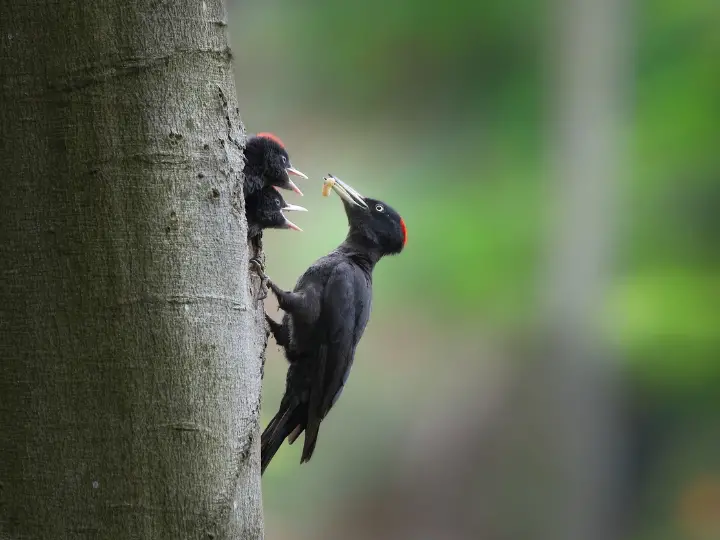
Hanko Peninsula - Spring Diversity
Location: Southern Finland, Finland’s southernmost point
Why Visit: While famous for autumn, spring offers unique opportunities
Spring at Hanko: Though less celebrated than autumn passage, Hanko’s spring migration offers excellent diversity and often includes rare species.
Spring Advantages:
- Geographic Position: Southernmost location sees earliest arrivals
- Multiple Habitats: Coastal, forest, and wetland areas
- Vagrant Potential: Spring overshoots occasionally appear
- Research Station: Hanko Bird Observatory provides expertise
- Infrastructure: Well-developed observation facilities
Spring Target Species:
- Early Migrants: First arrivals of many species
- Rare Possibilities: Yellow-browed Warbler and other overshoots
- Coastal Specialties: Seabirds and marine species
- Forest Migrants: Songbirds moving through forested areas
Weather-Dependent Fallouts: Storm systems concentrate migrants

The Art of Bird Photography: Spring Awakening
Spring Migration Strategies and Techniques
Weather and Migration Timing
Understanding Weather Triggers: Spring migration is profoundly weather-dependent, and understanding these relationships is key to success:
Optimal Migration Conditions:
- High Pressure Systems: Clear skies and calm winds favor mass movements
- Southerly Winds: Tailwinds accelerate northward migration
- Rising Temperatures: Warmth triggers departure and maintains movement
- Stable Weather: Extended favorable periods produce sustained migration
- Moon Phases: Some evidence for correlation with lunar cycles

Weather Systems to Monitor:
- Cold Front Passages: Can temporarily halt or reverse migration
- Warm Front Arrivals: Often trigger major departure events
- Wind Direction Changes: Dramatically affect coastal concentrations
- Precipitation: Rain and snow can ground migrants temporarily
- Temperature Trends: Advancing warmth pulls migrants northward
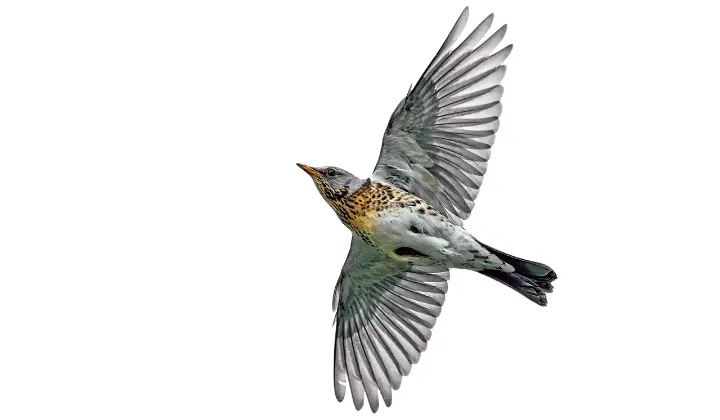
Strategic Weather Watching:
- Multi-Day Forecasts: Plan around predicted favorable periods
- Regional Weather: Migration progresses at different rates across Finland
- Hourly Updates: Conditions can change rapidly during spring
- Historical Patterns: Past years provide timing guidance
- Local Knowledge: Connect with Finnish birders for real-time intelligence

Maximizing Coastal Migration Viewing
Site Selection:
- Traditional Bottlenecks: Known concentration points most reliable
- Wind Considerations: Position based on predicted wind directions
- Tide Awareness: Coastal areas affected by water levels
- Background Considerations: Position sun behind observers when possible
- Multiple Viewpoints: Have backup locations for different conditions
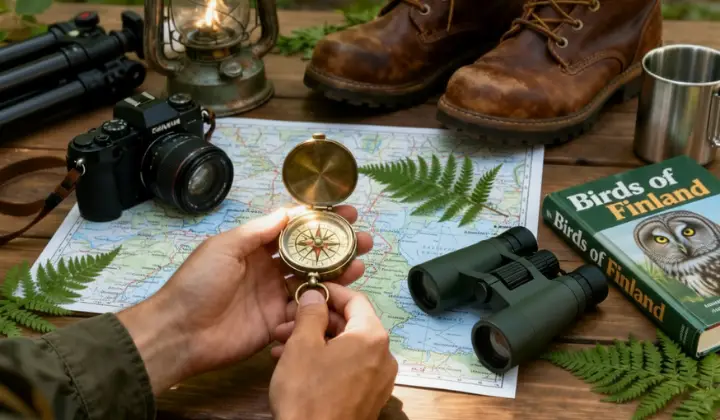
Observation Techniques:
- Dawn Positioning: Be in place before first light
- Systematic Scanning: Develop efficient scanning patterns
- Altitude Awareness: Birds at different heights require different focus
- Flock Counting: Develop techniques for estimating large numbers
- Species Separation: Learn to identify distant birds by structure and flight
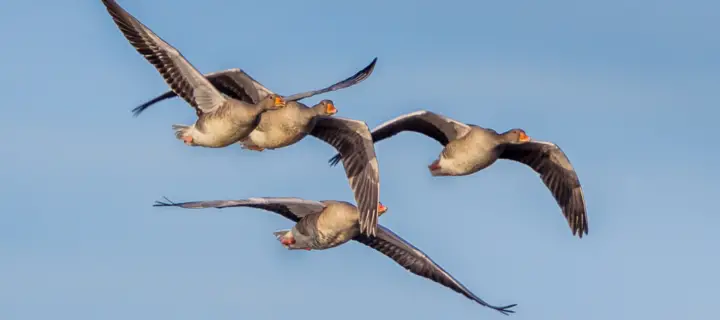
Equipment Optimization:
- Quality Optics: Essential for distant identification
- Spotting Scope: Necessary for waterfowl and distant observations
- Stable Support: Tripod crucial for extended observation
- Weather Protection: Keep equipment dry and functional
Recording Tools: Document observations for later analysis

Grouse Lekking Ethics and Techniques
Approaching Leks Responsibly: Lekking grouse are extraordinarily vulnerable to disturbance, making ethical observation paramount:
Ethical Guidelines:
- Hide Use Essential: Never approach active leks without proper concealment
- Pre-Dawn Arrival: Enter hides in darkness before birds arrive
- Complete Silence: Any noise can disrupt displays
- No Movement: Remain motionless throughout observation period
- Professional Guidance: First-time observers should use experienced guides
Hide-Based Observation:
- Advance Booking: Professional hides must be reserved well ahead
- Equipment Preparation: Everything must be ready before birds arrive
- Physical Preparation: Long, cold, motionless periods require stamina
- Clothing: Extreme cold requires comprehensive insulation
- Toilet Considerations: No breaks possible during observation
Photography from Hides:
- Equipment Pre-Positioning: Set up completely before dawn
- Sound Discipline: Camera sounds can disturb birds
- Flash Prohibition: Never use flash or artificial light
- Composition Planning: Know your shots before opportunities arise
- Respect Over Image: Bird welfare always takes absolute priority
Species Identification Challenges
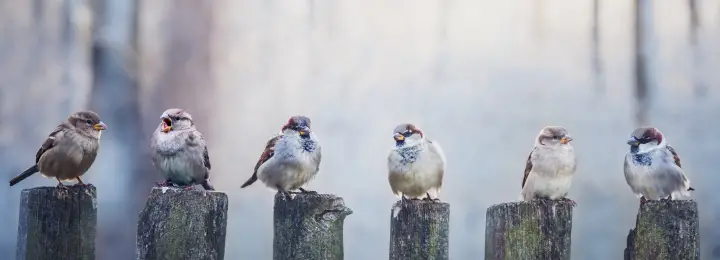
Spring Plumage Complexities
Breeding Dress Transformations: Spring brings birds in their most spectacular plumages, but this also creates identification challenges:
Waders in Breeding Plumage:
- Dunlin: Gray winter dress transforms to black belly and rusty back
- Curlew Sandpiper: Spectacular brick-red breeding plumage
- Sanderling: Black and rusty spangled breeding dress
- Spotted Redshank: Complete transformation to sooty black
- Grey Plover: Black belly and spangled upperparts
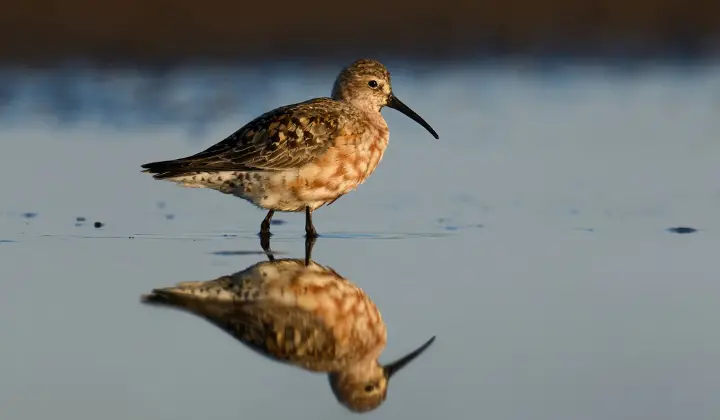
Duck Species Challenges:
- Eclipse Confusion: Males may retain some eclipse features
- Hybrid Possibilities: Various duck species hybridize
- Juvenile Persistence: Some first-year birds show retained immature features
- Distant Identification: Structure and behavior become critical
- Female Challenges: Many species have subtly different female plumages
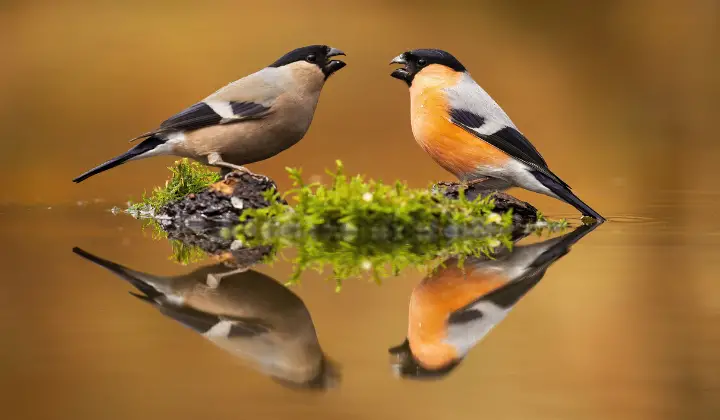
Gull Identification:
- Age-Related Variation: Multiple age classes in spring populations
- Subspecies Differences: Geographic variation complicates identification
- Hybrid Possibilities: Related species sometimes interbreed
- Wear and Fading: Winter wear affects spring appearance
- Molt Timing: Individual variation in molt progression
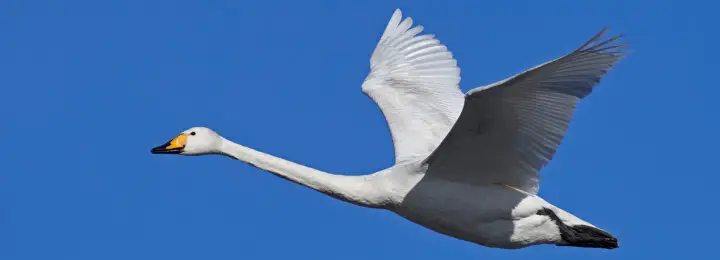
Vocal Identification Skills
Spring Chorus Complexity: With territorial singing at peak, vocal identification becomes essential:
Dawn Chorus Participants:
- Multiple Species Simultaneously: Sorting individual voices from cacophony
- Unfamiliar Songs: Rare species may appear among common singers
- Regional Variations: Dialects and local variations exist
- Individual Variation: Not all individuals sing textbook songs
- Environmental Effects: Weather and acoustics affect sound perception

Key Species to Learn:
- Thrush Nightingale: Rich, powerful song from dense cover
- Icterine Warbler: Varied, mimetic phrases
- Wood Warbler: Distinctive accelerating trill
- Blyth’s Reed Warbler: Acrocephalus identification challenge
- Various Warblers: Many species require vocal identification
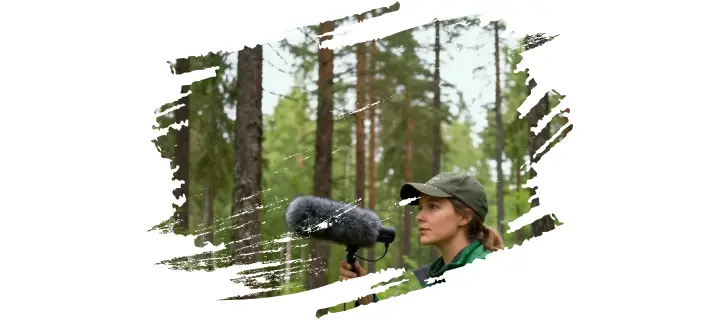
Recording and Analysis:
- Field Recording: Document unknown songs for later analysis
- Sonogram Analysis: Visual representation aids identification
- Comparison Tools: Use apps and references for comparison
- Expert Consultation: Share recordings with experienced birders
- Learning Curve: Vocal identification improves dramatically with practice
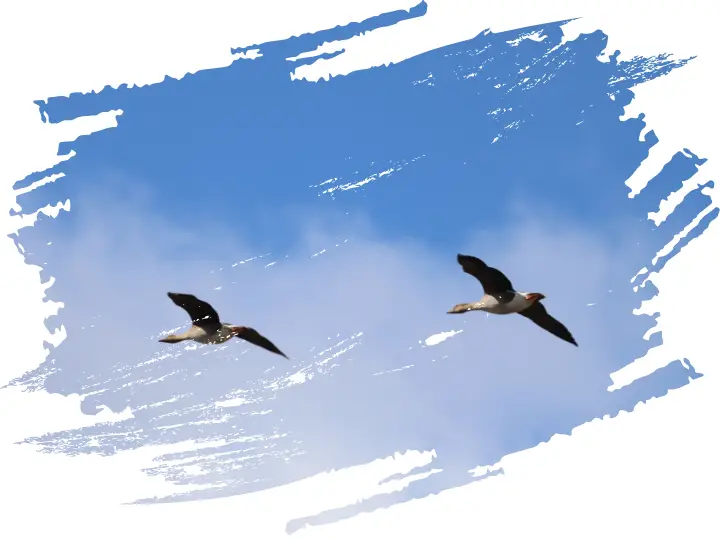
Practical Spring Birding Guide
Spring Weather Preparation
Variable Conditions: Finnish spring weather is notoriously unpredictable, with conditions ranging from near-winter cold to surprisingly warm days, sometimes within the same week.
Clothing Strategy:
- Layering System: Multiple layers for variable conditions
- Waterproof Outer: Rain and snow possible throughout spring
- Warm Base Layers: Early morning starts can be very cold
- Hat and Gloves: Essential for grouse lekking and dawn observation
- Footwear: Waterproof boots for wet, muddy conditions
- Sun Protection: Increasing UV exposure as days lengthen
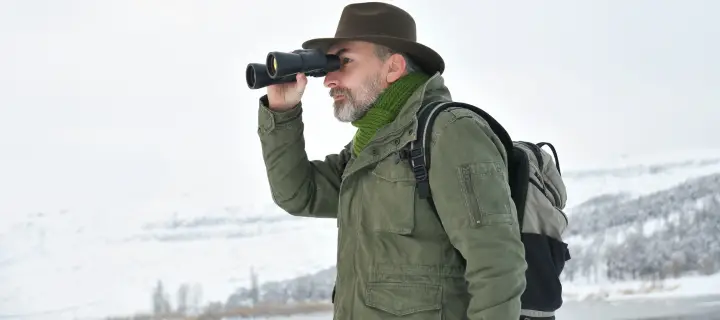
Dealing with Snow and Ice:
- Northern Persistence: Snow covers the forests of Kuhmo until 10th of May
- Ice Conditions: Frozen lakes and wetlands limit waterfowl habitat
- Mud Season: Melting snow creates extremely muddy conditions
- Road Conditions: Forest tracks may be impassable during thaw
- Changing Daily: Conditions can vary dramatically day to day

Equipment Essentials
Optical Requirements:
- Binoculars: 8×42 or 10×42 for general use
- Spotting Scope: Essential for waterfowl identification and counting
- Tripod: Stable support crucial for extended observation
- Lens Cleaning: Moisture and precipitation require frequent cleaning
- Backup Optics: Equipment failure could ruin trip
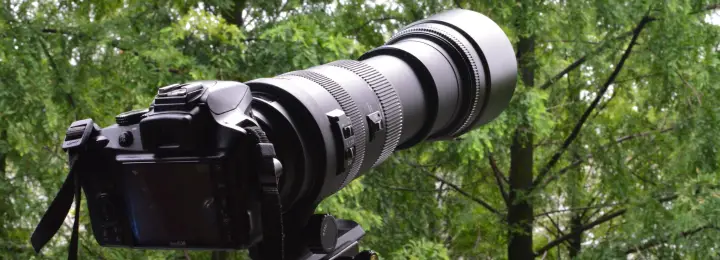
Documentation Tools:
- Field Notebook: Record observations, conditions, and insights
- Camera: Telephoto lens for documentation and identification
- Audio Recorder: Capture songs and calls for later analysis
- Smartphone Apps: eBird, Merlin, and other identification tools
- GPS Device: Mark locations of interesting observations

Comfort and Safety:
- Thermos: Hot drinks essential for cold morning watches
- High-Energy Food: Migration watching burns calories
- First Aid Kit: Basic medical supplies
- Communication Device: Cell phone or radio for remote areas
- Emergency Supplies: Blanket, fire-starting materials for emergencies

Accommodation and Logistics
Regional Bases:
- Virolahti Region: Book early for Arktika Days period
- Oulu: Excellent base for Liminka Bay and northern sites
- Kuusamo/Kuhmo: Eastern forest and grouse lek access
- Helsinki: Southern coast and urban birding opportunities
- Hanko: Peninsula’s southern position
Transportation Considerations:
- Rental Vehicle Essential: Public transport insufficient for most sites
- 4WD Advantage: Helpful for forest tracks during muddy season
- Fuel Planning: Remote areas have limited services
- Route Flexibility: Weather may require itinerary changes
- Traffic Considerations: Popular sites busy during peak migration
Timing Your Visit:
- Early April: Southern sites, first arrivals, grouse lekking begins
- Late April: Increasing diversity, lekking peaks, migration builds
- Early May: Major migration underway, excellent diversity
- Mid-May: Arktika peak, maximum spectacle
- Late May: Final migrants, breeding season begins
Photography in Spring Conditions
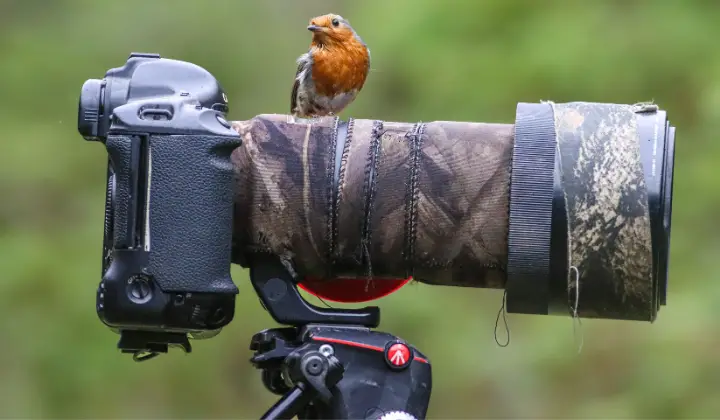
Capturing Spring Migration
Technical Challenges:
- Moving Subjects: Fast-flying birds require high shutter speeds
- Variable Light: Spring weather creates constantly changing conditions
- Distance Challenges: Many subjects distant, requiring long lenses
- Environmental Context: Including habitat and weather in compositions
- Behavioral Documentation: Capturing migration and display behaviors

Waterfowl Photography:
- Flock Compositions: Showing scale of migration phenomenon
- Flight Shots: Capturing movement and energy
- Habitat Context: Environmental storytelling
- Identification Details: Documentation quality images
- Artistic Interpretations: Creative approaches to familiar subjects
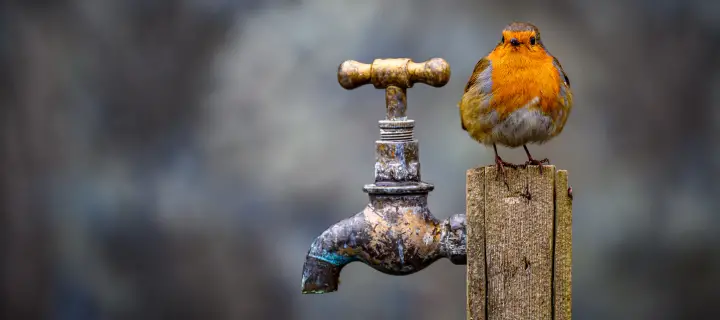
Grouse Photography Ethics:
- Hide Necessity: Never photograph without proper concealment
- Light Limitations: Pre-dawn conditions require high ISO capability
- Sound Discipline: Quiet cameras essential
- Movement Restrictions: Compose before subjects arrive
- Bird Priority: Never prioritize image over bird welfare

Lighting Opportunities
Spring Light Characteristics:
- Extending Golden Hours: Increasingly long dawn and dusk light
- Variable Cloud Cover: Dramatic lighting possibilities
- Snow Reflection: Natural reflector in northern areas
- Coastal Light: Water reflections enhance light quality
- Forest Shadows: Dappled light in woodland settings

Optimal Timing:
- Dawn Shoots: Peak activity coincides with beautiful light
- Overcast Days: Even light for bird photography
- Sunny Periods: Harsh light but vibrant colors
- Evening Light: Secondary activity peak possible
- Weather Transitions: Dramatic lighting during changing conditions
Conservation and Citizen Science
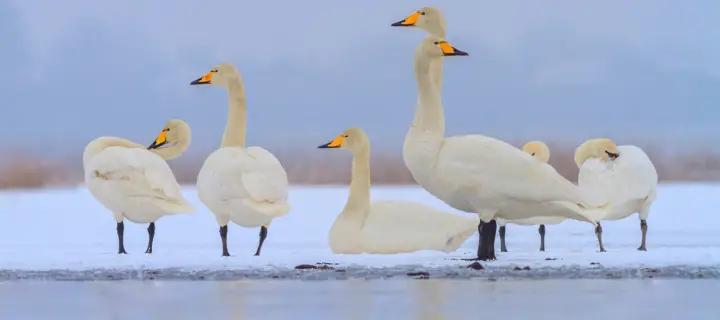
Spring Migration Research
Why Spring Data Matters: Spring migration monitoring provides critical information:
- Phenology Studies: Tracking changes in migration timing
- Population Monitoring: Assessing species abundance trends
- Climate Change Indicators: Migration timing reflects environmental changes
- Stopover Site Importance: Documenting crucial rest and feeding locations
- International Cooperation: Finnish data contributes to flyway-wide monitoring
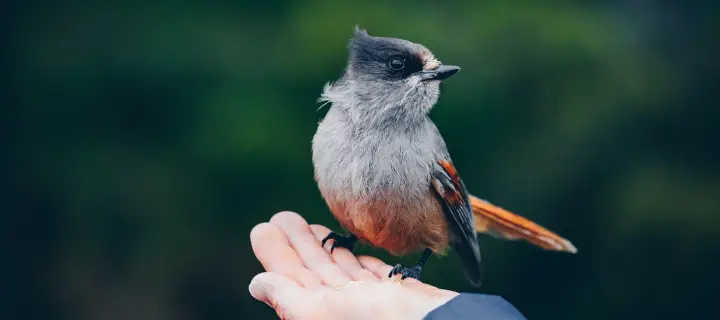
Citizen Science Participation:
- eBird Submissions: All observations contribute to scientific knowledge
- Breeding Bird Surveys: Participate in established monitoring programs
- Migration Counts: Organized counting efforts at key sites
- Phenology Documentation: Recording arrival dates and peak timing
- Rare Species Reporting: Contributing to vagrancy documentation
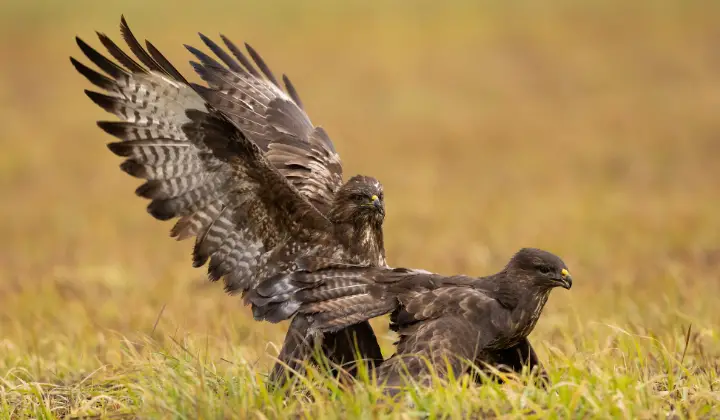
Conservation Challenges
Spring Migration Threats:
- Habitat Loss: Development pressures on stopover and breeding sites
- Climate Change: Shifting timing creates phenological mismatches
- Human Disturbance: Increased recreation impacts sensitive species
- Pollution: Agricultural and industrial impacts on wetlands
- International Coordination: Conservation requires cooperation across countries
Supporting Spring Bird Conservation:
- Responsible Observation: Minimize disturbance to migrants and breeding birds
- Habitat Protection: Support conservation organizations and protected areas
- Sustainable Tourism: Choose eco-friendly services and accommodations
- Education and Outreach: Share knowledge and inspire conservation ethic
- Political Engagement: Support policies protecting migratory birds
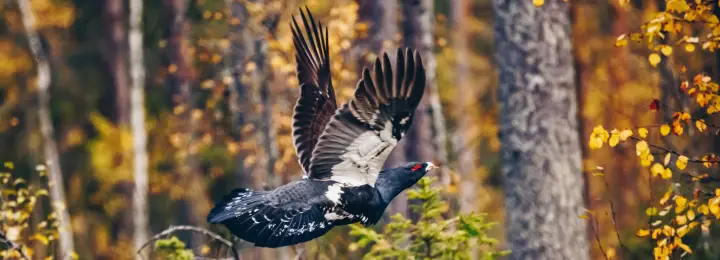
Grouse Conservation
Grouse Population Concerns:
- Capercaillie Declining: Populations reduced across much of range
- Habitat Requirements: Need large areas of mature forest
- Disturbance Sensitivity: Lekking disruption affects breeding success
- Predation Pressure: Some populations affected by predator abundance
- Climate Impacts: Changing weather patterns affect breeding success
Responsible Grouse Watching:
- Professional Hide Use: Never approach leks independently
- Single Visit Maximum: Limit disturbance to once per season
- Photography Ethics: Image never justifies risking breeding success
- Location Discretion: Avoid publicizing specific lek locations
- Support Research: Contribute to or support grouse conservation efforts

Conclusion: Embracing Spring's Explosive Energy
Spring in Finland is birding at its most intense, dynamic, and spectacular.
The Arktika migration represents one of Europe’s great natural phenomena – a concentrated pulse of life surging northward that connects the Mediterranean to the Arctic, linking continents and ecosystems in a demonstration of the interconnectedness of our planet’s wildlife.
From the moment the first Whooper Swans appear on newly opened water to the peak spectacle of hundreds of thousands of geese streaming northward along the Gulf of Finland, spring offers experiences that rank among the finest in European birding. The energy is palpable, the diversity staggering, and the sense of participating in something vast and ancient profound.
The grouse leks add another dimension to spring’s magic – ancient displays that predate human presence in these northern forests, performances honed over millennia to showcase fitness and secure mating opportunities. Witnessing a Capercaillie’s bubbling display or watching dozens of male Black Grouse competing for female attention connects observers to evolutionary processes and behaviors that transcend individual experience.
Spring demands flexibility, weather awareness, and sometimes significant physical commitment.
Dawn starts are necessary, conditions can be challenging, and the compressed timing means missing peak migration can happen despite best planning. Yet these challenges only enhance the rewards – every encounter earned through patience and persistence becomes more meaningful, every spectacular migration day more treasured.
For international visitors, spring birding in Finland offers immersion in one of Europe’s great natural spectacles while experiencing Finnish culture at a time of renewal and celebration.
After months of winter darkness, Finns embrace spring with particular enthusiasm, and sharing in that seasonal joy while witnessing the Arktika creates memories that transcend birding alone.
The conservation context adds urgency and meaning to spring observations. Migration routes and stopover sites face increasing pressures, climate change affects timing and success, and species like Capercaillie face uncertain futures.
Every observation contributes to scientific understanding, and every birder becomes a conservation participant through responsible observation and data sharing.
Spring in Finland changes perspectives. It reveals the remarkable navigational abilities of birds that travel thousands of kilometers with precision, demonstrates the power of evolutionary adaptations that allow survival in harsh environments, and illustrates the importance of international cooperation for conservation success.
It builds appreciation for the resilience of life and the interconnectedness of global ecosystems.
Plan your spring visit with care, monitor weather patterns closely, arrive with appropriate gear and realistic expectations, and prepare for one of Europe’s most remarkable birding experiences.
Whether you’re positioned at Virolahti watching sky-filling flocks of Barnacle Geese, sitting silently in a hide as dawn breaks and Capercaillie begin their ancient displays, or systematically scanning Liminka Bay’s vast wetlands for rare waders, Finland’s spring will provide experiences that define what birding means and why it matters.
The Arktika awaits – prepare to be transformed by one of nature’s greatest spectacles.
Remember: Spring migration timing varies annually based on weather patterns and advancing seasonal conditions.
Always check current migration progress and recent sightings before finalizing your visit.
The dates provided are general guidelines – actual peak timing can shift by 1-2 weeks depending on spring’s progression.
Local birding groups and visitor centers provide the most current information for maximizing your spring birding success.

